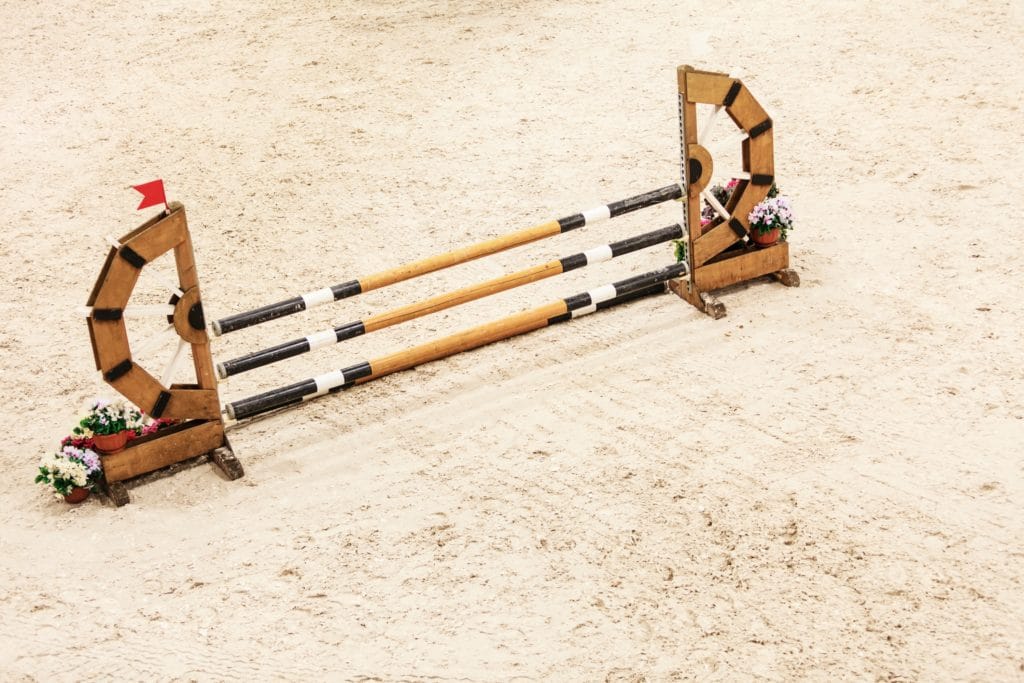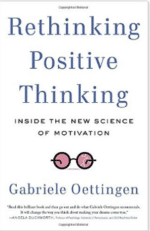
In last week’s post I wrote: “Wishful thinking actually decreases our possibility of meaningful action,” as I explored why dedicating ourselves to what we want to create can be more effective than making resolutions.
That statement was inspired by Gabrielle Oetinger and the research she writes about in Rethinking Positive Thinking: Inside the New Science of Motivation.
 Although thinking positively about the future can be very empowering, it can also be trivialized into chanting, affirming and sitting back and hoping. After watching that New Age cult classic The Secret, with its emphasis on the law of attraction (i.e. you can pull things to you by your intention alone), this kind of thinking makes me very queasy. Does this mean that all it takes to get that mansion in Malibu is to intend and affirm? Really? Or that the beautiful, loving and inspiring friends I’ve lost to cancer didn’t think positively enough about their healing? (Don’t get me going on this one!)
Although thinking positively about the future can be very empowering, it can also be trivialized into chanting, affirming and sitting back and hoping. After watching that New Age cult classic The Secret, with its emphasis on the law of attraction (i.e. you can pull things to you by your intention alone), this kind of thinking makes me very queasy. Does this mean that all it takes to get that mansion in Malibu is to intend and affirm? Really? Or that the beautiful, loving and inspiring friends I’ve lost to cancer didn’t think positively enough about their healing? (Don’t get me going on this one!)
Although tapping into our our imaginations and dreams and setting intentions are powerful ways to draw forth the future, just hanging out with dreams without acting upon them can have negative results, according to Oetinger. It can make us complacent and less likely to achieve them,
What she discovered over her twenty years of research was that a dream is more likely to be realized when you vividly imagine a positive future and then contrast it with an image of an obstacle that might get in the way.
She writes:
“The solution isn’t to do away with dreaming and positive thinking. Rather, it’s making the most of our fantasies by brushing them up against the very thing most of us are taught to ignore or diminish: the obstacles that stand in our way.”
She offers us a fourstep process called WOOP in which imagining positive outcomes is contrasted with possible obstacles and plans for overcoming them.
Attracted to her evidence-based approach, I decided to put this idea to the test during a recent horseback riding lesson.
My goal was to successfully jump an obstacle that was, frankly, scaring me. My aging body has felt the impact of the ground too often to enjoy it anymore. The prospect of falling off my horse has made me more timid jumping than I was twenty years ago.
Now, if I used an approach based in setting an intention and visualizing success, I could imagine successfully clearing the jump. Rather than focus on the obstacle, I’d repeat some affirmations, hold my breathe (most likely) and head for the jump. Results uncertain.
I didn’t like that option. Instead I tried Oetinger’s simple instructions for her WOOP process. (Despite its simplicity, she has extensively tested it scientifically.)
1. Wish–“Something you really want to accomplish. A wish is exciting challenging and realistic.”
I pictured clearing the challenging jump successfully, my horse obedient, my riding seat secure.
2. Outcome – “The best outcome that would result from accomplishing your goal. How would the outcome make you feel? Let your mind go and imagine this outcome.”
I imagined patting my horse, feeling exhilarated and proud. I see my horse asd happy, too.
3. Obstacle –“The personal obstacles that prevent you from accomplishing your goal. Let your mind go and imagine this obstacle.”
I imagine the jump. I assessed its size and whether my horse had jumped anything like it. I felt what it would be like for my horse to jump clear and whether I would be likely to stay with her without falling. (Oetinger says its all right to change your goal if you see it’s not accurate—and I’m not pushing myself towards the Olympics these days. I realized that the biggest obstacle wasn’t the size of the jump, or my horse’s ability, but my fear.
4. Plan. “What can you do to overcome your obstacle? Name one action you can take or thought you can have. Make an if/then plan and imagine it. If / When _________ (obstacle), then I will __________ (action to overcome obstacle).”
Now that I’d identified fear as an obstacle, there were some things I could do to stick in the saddle. Breathe and let the weight of my body sink into my heels. Keep my eyes up and forward. Press my calf firmly into the side of my horse. Grab a bit of her mane and hold on when we go to the jump.
When it came time to face the jump, my heart started beating fast. I was still scared. But I remembered my plan and headed resolutely towards the jump. We cleared it—not elegantly, but, hey, I was still in the saddle and exuberant!
There’s a lot more behind Oetinger’s research, and it’s worth reading about. (Including this easy guide for students.)
She offered me a secret that the movie The Secret didn’t provide: combine creative, embodied visualizations about the future with equally vivid data about the obstacles you will face and the steps you will take to overcome them.
You can use your creative imagination to envision an outcome, an obstacle and a plan—and greatly increase your chances of success.
Imagination, intention and action can all dance together. Killer!










One Response
Really a great post Sally. I have a daughter who jumps and know the trepidation second hand of those jumps…..I am doing some personal planning as I write this and will experiment wooping it up : )